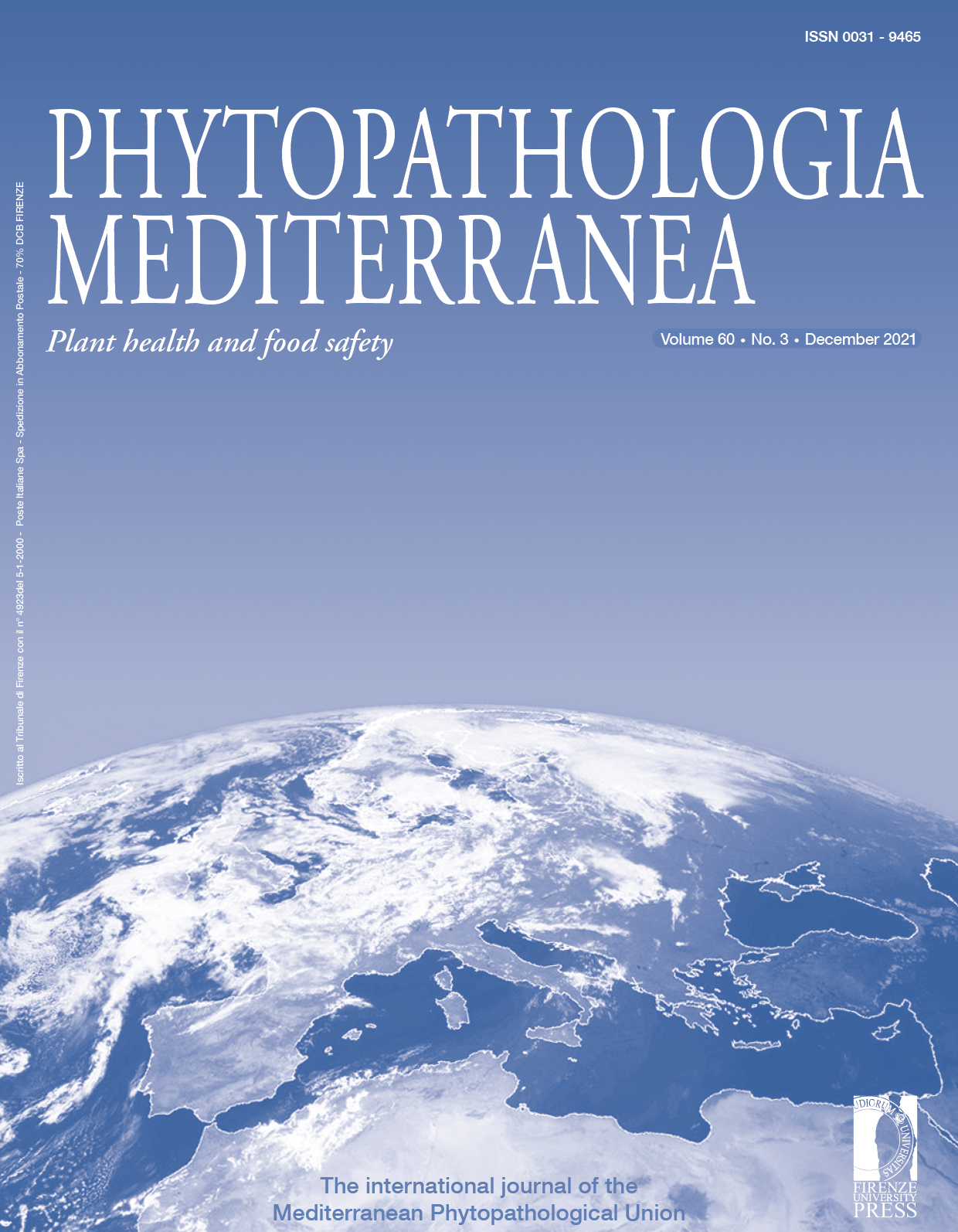Published 2021-12-30
Keywords
- Vaccinium corymbosum,
- multi-locus typing,
- berry fruit
How to Cite
Abstract
Highbush blueberry is an increasingly important crop due to its economic value and demonstrated health benefits of blueberries. Leaf spots are considered as minor diseases of blueberry plants, but they adversely affect blueberry productivity, causing reduced photosynthetic activity, flower bud formation and berry production. Surveys of blueberry crops were conducted in Piedmont, Northern Italy, during 2019-2020. Fungi isolated from leaf spots of the blueberry cultivar ‘Blue Ribbon’ were identified as Colletotrichum helleniense through a robust multi-locus phylogeny. Eight genomic loci were considered: tub, gapdh, act, cal, his3, chs-1, ApMat and gs. Morphological characters of a representative strain were assessed. Pathogenicity was confirmed on four blueberry cultivars, although with different levels of aggressiveness to the cultivars. This study shows the importance of a polyphasic approach to investigate species of Colletotrichum, and the relevance of molecular tools for the species-level characterization within the ‘Kahawae’ clade. This is the first report of Colletotrichum helleniense causing leaf anthracnose on Vaccinium corymbosum.







